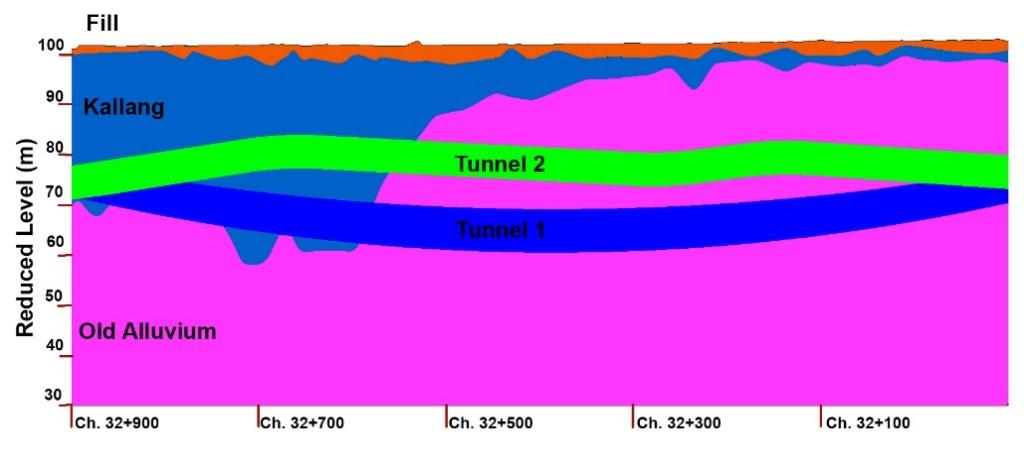Stacked Tunnelling Induced Surface Settlements in Soft Soil – A Case Study from Singapore

Abstract
The growing demand for public and sustainable transportation in heavily urbanized areas like Singapore requires construction of an increasing number of Metro Lines. Complicated technical challenges are associated with such an activity and settlement prediction models play a key role in assessing the tunnelling-related risk assessments and planning mitigation techniques. Although a significant amount of research has been performed to study the settlements induced by side-by-side twin tunnels, the settlement prediction of stacked tunnelling has been, relatively, limited. In this paper, stacked tunnelling induced settlements are predicted using 2D numerical simulation. The extensive data from the instrumentation measurements collected during the construction of a stacked configuration tunnel in Singapore Downtown Line MRT tunnels have been used to study the validity of the principle of superposition for stacked tunnels. Key observations are presented by comparing empirical, numerical and actual field settlement data. Using the Monte-Carlo simulation technique, the empirical trough parameter is back-calculated to fit the actual settlements observed in Kallang formation. This could be used for future settlement predictions in similar ground conditions.
Keywords
Citation
Senthilnath, G., Velu, D. (2016). Stacked Tunnelling Induced Surface Settlements in Soft Soil – A Case Study from Singapore, Vol. 3, Issue 3, p.162-175. doi: 10.4417/IJGCH-03-03-03
DOI: http://dx.doi.org/10.4417/IJGCH-03-03-03
Copyright © 2004-2018 Elxis s.a. All rights reserved. Powered by Argo-E LLC.



